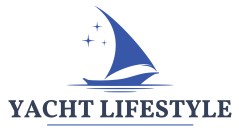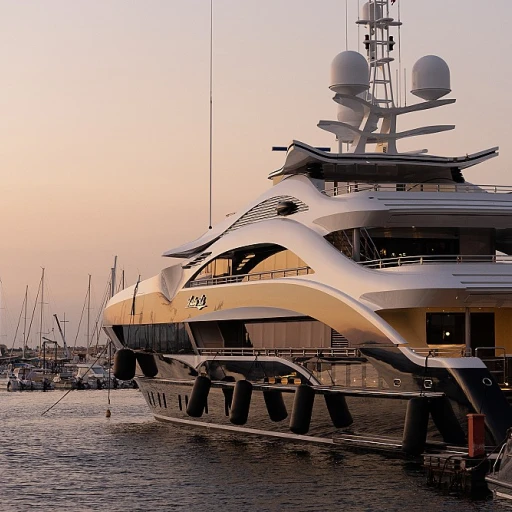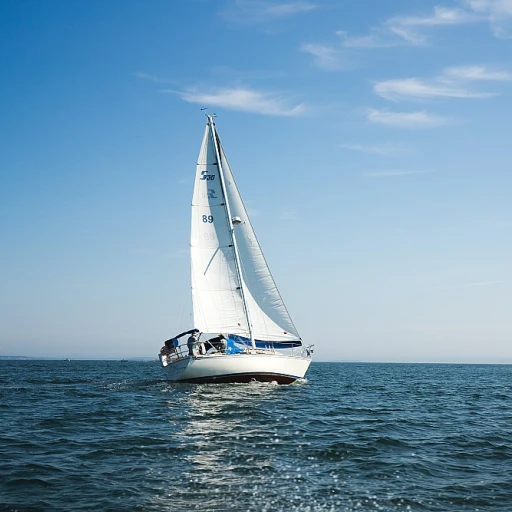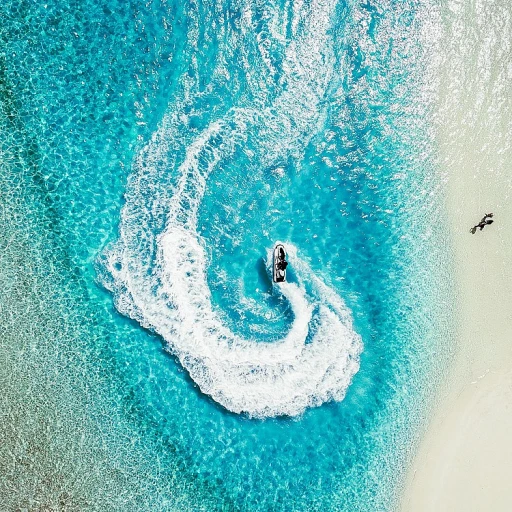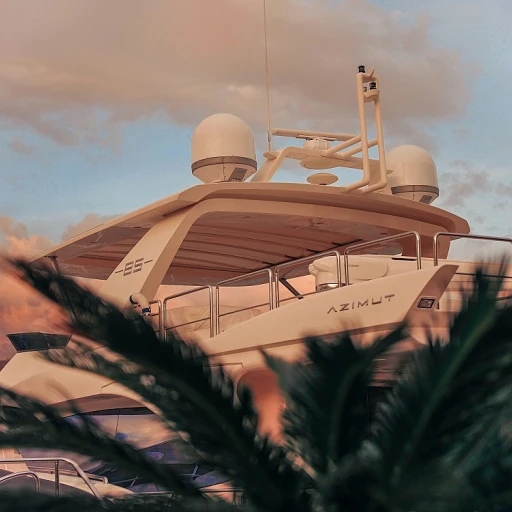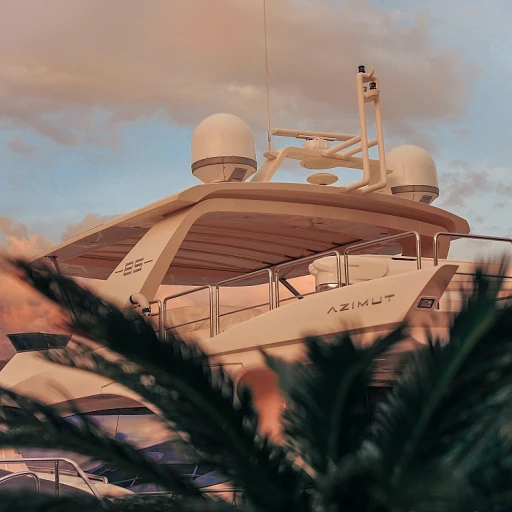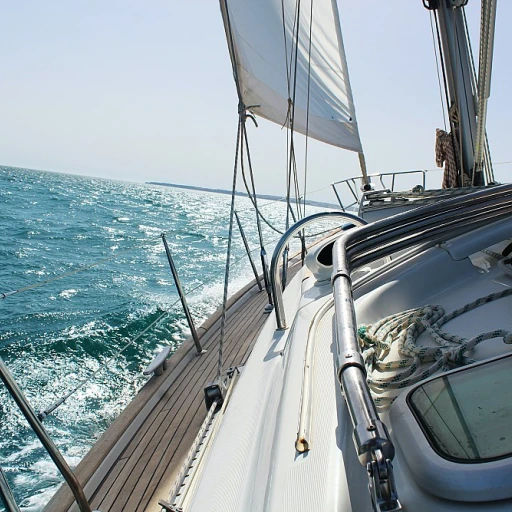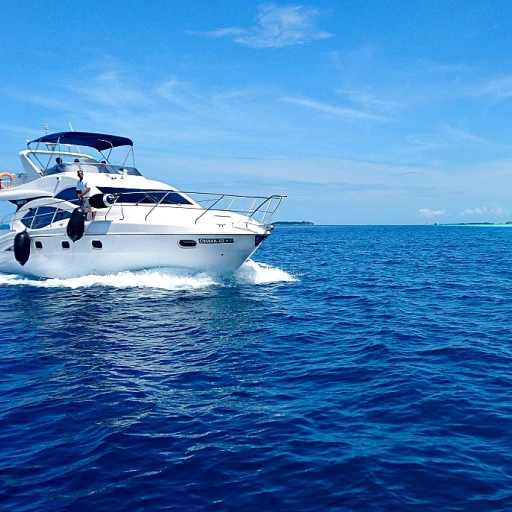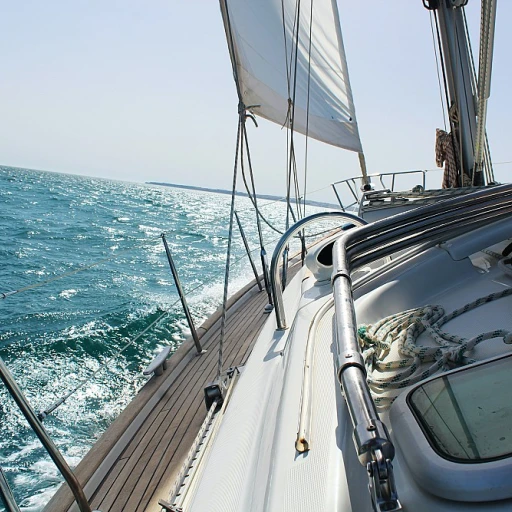
The Evolution of Sailing Navigation Tools
The Transformation of Sailor's Toolkit Over Time
The world of sailing has witnessed a remarkable progression in the tools and instruments used for navigation. As sailors adventure through open waters, understanding the evolution of these navigation aids becomes essential. From the early days of celestial navigation to the sophisticated digital solutions available today, this journey is as fascinating as it is crucial.
In earlier times, sailors relied heavily on astronomical instruments such as the sextant, which was a key player in celestial navigation. This nautical tool allowed navigators to determine latitude by measuring the angle between a celestial body and the horizon. The sextant, often crafted in solid brass, was a prized possession in many navigation kits. Brands like Davis Instruments offered durable solutions, making both the traditional mark sextant and modern digital charts indispensable.
Parallel rulers and marine compasses also form the backbone of traditional navigation tools, aiding sailors in plotting courses on nautical charts. These parallel rulers have been vital, providing quick reference for direction and maintaining a steady path across the oceans.
The transition to modern tools began with the introduction of more precise nautical charts and the use of digital tools like the electronic navigation systems. This shift has transformed marine navigation and increased safety standards considerably. The integration of these systems into small white boats ensures that sailors are equipped to handle various maritime challenges with accuracy and efficiency.
As the Coast Guard continues to stress the importance of navigation tools, sailors now have a vast suite of aids navigation tools at their disposal. This not only enhances safety at sea but also ensures efficiency in charting a course and determining speed and time.
While advancements in technology are undeniable, maintaining a balance between traditional and modern tools is vital. A well-rounded navigation set, including Weems & Plath instruments and others, prepares sailors for any situation they might encounter. For those looking to enhance safety devices aboard, an automatic bilge pump is crucial.
Must-Have Instruments for Every Sailor
Essential Instruments for Seamless Sailing
Navigating the vast waters requires a combination of both traditional and modern navigation tools. Each instrument serves a pivotal role in ensuring that a sailor maintains a reliable and accurate course.- Compass: Often considered the heart of navigation, the compass is indispensable for determining direction. Its reliability remains unaffected by digital glitches, making it a steadfast ally in marine navigation.
- Nautical Charts: Used for plotting routes, these charts provide invaluable information about water depths, coastlines, and potential hazards. They remain a favorite among traditional sailors who prefer tangible aids navigation.
- Parallel Ruler: Key for transferring courses or bearings, this instrument is often paired with nautical charts for precise plotting.
- Sextant: Traditionally used for celestial navigation, the sextant, like the mark sextant variety, allows sailors to determine their position by measuring angles between celestial bodies. It remains a staple for those who enjoy the classic art of navigation.
- Digital Navigation Tools: While traditional tools hold their place, digital charts and GPS technology offer quick reference and adaptability. These modern instruments simplify the navigation process, providing real-time updates on your location, course, speed, and other vital data.
Digital vs. Traditional Navigation: Pros and Cons
Balancing Tradition with Technological Advancements
Navigating through the vast expanse of open water has transformed significantly with the rise of digital technology, yet many sailors still swear by the reliability of traditional instruments. So, how do you choose between digital and traditional navigation tools for your yacht? Both have their place on the small white boat, and understanding their pros and cons can set you on the right course. Traditional navigation tools like the sextant and the compass are prized for their independence from batteries and electronics. With a Weems & Plath sextant or a Davis Instruments compass, sailors can always rely on the time-tested techniques of celestial navigation and magnetic bearings. These tools are vital to any basic navigation set, providing an important backup to digital instruments. On the other hand, digital navigation tools offer real-time, accurate positioning and sophisticated aids navigation. They integrate various data like speed, course, and location, providing a comprehensive view that traditional methods simply cannot match. Digital charts, for example, are constantly updated, reducing the need for physical nautical charts which can become outdated. But they come with a price tag, not only in terms of money but also in terms of reliance on electronic systems. For those looking to bridge the gap, combining both traditional and digital tools provides a rounded approach to marine navigation. Using a slide rule for quick calculations, a solid brass parallel ruler for transfer across charts, or a plath parallel ruler can enhance precision. Meanwhile, digital aids, integrated into a navigation kit, serve as a powerful tool during complex navigational challenges. Whether you're sailing a small boat or navigating a larger yacht, having the right balance of tools ensures both safety and efficiency on the water. It's about finding what works best for you and your vessel, keeping in mind the importance of both navigation tools for yachts, and the joy of sailing itself.Innovations in Marine Technology
Marine Technology: A Quantum Leap in Navigation
As we sail further into the digital age, marine technology continues to advance in leaps and bounds, transforming how we approach navigation. Traditional tools are no longer the only aids sailors rely on. These technological innovations enhance accuracy, reliability, and safety. Modern marine navigation leans heavily on digital solutions. The shift toward using GPS systems and digital charts has not only streamlined navigation but has also provided real-time data that can be crucial, especially in challenging weather conditions. Accuracy is greatly improved when GPS is used in coordination with nautical charts, allowing sailors to chart their course with exceptional precision. Traditional tools like the mark sextant and solid brass instruments remain valuable for navigators who appreciate the touch of classic navigation. They provide a layer of reliability, especially in situations where digital systems might fail due to technical hitches or electronic interferences. Using a navigation set that includes a compass, parallel ruler, and sliding rule ensures that basic navigation techniques remain relevant. Technology has also revamped hardware. Instruments crafted by brands such as Weems & Plath and Davis Instruments offer a perfect blend of traditional craftsmanship and modern functionality. For example, the parallel rulers in these navigation kits enable quick reference and recalibration of course and speed, which are invaluable for maintaining direction. In additions to individual tools, integrated systems are becoming widely adopted. These systems have the capability to combine multiple navigation tools into a single unit, streamlining navigation tasks and minimizing the need to switch between tools. This integration is particularly useful for smaller vessels where space is a premium. In conclusion, balancing traditional tools with digital devices is key. While marine technology has significantly improved navigation capabilities, having a good grasp of both worlds strengthens a sailor's ability to navigate under all circumstances. The evolution of these tools supports a safer and more efficient sailing adventure.Choosing the Right Tools for Your Yacht
Factors to Consider in Navigation Tool Selection
Navigating the open waters demands precision and reliability from your tools. When deciding which navigation instruments to bring on board, there are several key considerations:- Compatibility with Your Vessel: Your yacht's size and design influence the practicality of various navigation tools. Smaller boats may benefit from portable, compact instruments like a handheld compass or a mark sextant, while larger vessels can accommodate more elaborate setups, such as a davis instruments kit or solid brass aids navigation tools.
- Purpose and Route: The nature of your sailing ventures—whether coastal cruising or transoceanic travel—determines the necessary tools. Nautical charts and digital charts offer different levels of detail and functionality, suited to specific needs. Parallel rulers or a slide rule assist in plotting a precise course on marine charts.
- Balance Between Digital and Traditional Instruments: While digital charts and electronic navigation kits offer quick reference and convenience, traditional tools like the weems plath chart or navigation set boast unparalleled reliability and do not depend on electronic power sources, which can be crucial during power outages or technical failures.
- Ease of Use: Opt for instruments that provide intuitive operation tailored to your skill level. Even with a sophisticated setup, familiarity with basic navigation tools, such as a plath sextant or parallel ruler, can greatly enhance your sailing efficiency.
- Durability and Maintenance: Instruments that withstand the harsh marine environment are an investment. Assess the build quality and durability, factoring in the time required for regular maintenance and any potential upgrades. Navigation tools from reputable brands often promise longevity and reduced maintenance costs in the long run.
- Cost and Value: Prices for navigation tools can vary widely. Consider both your budget and the long-term value. Solid brass instruments may carry higher initial costs but often prove cost-effective due to their durability and precision.
Maintaining and Upgrading Your Navigation Equipment
Ensuring Reliable Performance and Longevity
Maintaining and upgrading your yacht's navigation equipment is crucial for safe and efficient sailing. As many experienced sailors would agree, consistent upkeep and periodic enhancements ensure that your navigation tools provide accurate and timely information. Here's what you need to know:- Routine Checks: Regularly inspect your essential tools such as the compass, nautical charts, and parallel rulers. Stands of saltwater and dust can interfere with their accuracy. Make sure tools like the weems plath navigation kit or davis instruments are in good condition.
- Cleaning and Lubrication: Tools with moving parts, such as the solid brass sextant, benefit from occasional lubrication to maintain smooth operation. Clean each tool with appropriate methods to avoid damage. For example, a small, white cloth can be quite effective for gentle cleaning.
- Upgrading Digital Equipment: While traditional aids to navigation remain valuable, investing in updated digital charts and marine navigation software can enhance your ability to plot courses with increased precision. Digital navigation also often provides real-time data for course, speed, and other vital statistics.
- Calibration: Tools used for precise measurements, like the mark sextant and plath tools, require periodic calibration. This ensures that your readings remain accurate, which is particularly vital when guiding your small boat through tricky waters.
- Training and Quick Reference: Familiarize yourself with quick reference guides included in any new navigation kit. Understanding how to use newer or upgraded tools efficiently can drastically improve your sailing experience.
- Consider Usage and Environment: Think about your typical sailing environment. Opt for durable, marine-grade instruments that can withstand the conditions you commonly encounter. When adding new tools, assess whether their features match your specific sailing needs and align with your navigation setup.
